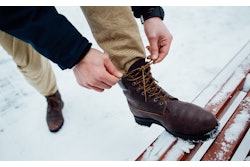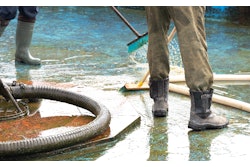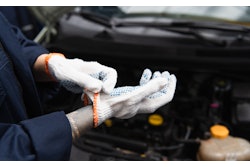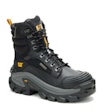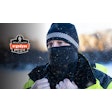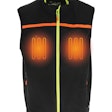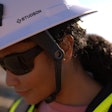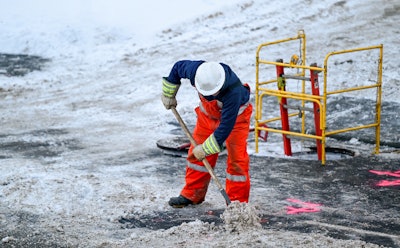
At this time in the year in many parts of the country, extra protection against the weather elements when working on the construction site ensures comfort and safety.
To that end, many workers appreciate wearing hard hat liners. Depending on the brand, some are designed to fit over a hard hat while others are designed to be worn under a hard hat. Sometimes one liner can be used both ways.
According to a British Medical Journal report, a measured 10 percent of total heat loss occurs from the head. The Cleveland Clinic notes it is best to wear a head covering when it gets cold as frostbite symptoms can start to develop quickly on any exposed skin – especially ears and noses – when temperatures dip into the single digits Fahrenheit.
Hypothermia also can be a problem for those who are inadequately protected.
Factors to Consider
There are several factors for a construction worker to consider when choosing a hard hat liner for maximum cold protection. The primary factor is always ensuring the liner complies with safety regulations and standards. Workers should check with their construction company’s safety director, who can help guide the appropriate choice of liners to wear.
Choosing liners that are designed and manufactured for the purpose of being worn with a hard hat is the best management practice for safety as opposed to simply wearing a hoodie under or over a hard hat.
Key safety features for liners include hard hat compatibility. The liner should fit securely without compromising the overall fit and function of the hard hat, ensuring safety and effectiveness in keeping a construction worker warm.
As per ANSI standards, Class B helmets are designed to reduce the impact of falling objects and reduce the danger of contact with exposed high-voltage electrical conductors. Therefore, no metal parts can be used in liners worn with these helmet types. When working in low-light conditions, construction workers should choose a liner that offers reflective material. Flame-resistant materials are a must for those working in environments where arc flash is a risk.
ASTM F106 is the standard performance specification for flame resistant and electric arc rated protective clothing worn by workers exposed to flames and electric arcs.
Weather conditions will dictate the selection of a liner’s material properties. Extremely cold conditions may call for thick insulative material such as Thinsulate, fleece, or other thermal fabrics. These materials provide effective insulation and heat retention in cold conditions.
Some hard hat liners are made of an organic material like cotton; others are made of a synthetic material, which tend to last longer. Polyester liners are warm as well as durable. Windy worksites may call for liners with wind-resistant materials such as fleece or microfleece. If the worksite has significant precipitation, a water-resistant liner should be considered.
Some manufacturers have designed hard hat liners with multiple layers, each layer made of different materials. For example, the outer shell may be 100 percent quilted nylon while the mid layer may be foam insulation for additional thermal protection. The warm lining may be made of 100 percent polyester Sherpa.
Coverage and Features
The coverage the liner provides is important for maximum protection. Make sure the liner fully covers the head and ears. Shoulder-length liners offer additional neck protection, a desired feature in windy or rainy conditions. Another choice is slip-on tube-style full-face hard hat liners. Some manufacturers present hard hat liner options designed for women workers.
Some liners are designed with face masks that offer extra protection from the elements. Some liners are specially designed with ear warmers and may provide pockets by the ears designed to hold warming packs. Additional features include moisture-wicking properties that help prevent sweat build-up, key to maintaining warmth in cold conditions.
Some liners are designed with multiple layers and zippers, snaps, or buttons, enabling the worker to make adjustments to the level of insulation needed in response to the severity of the cold weather. Liners designed with hook and loop straps can help keep the liner securely in place.
Some liners are designed with a removable face mask to ensure optimal warmth. Some liners are crafted with a detachable mouthpiece. Liners that are easily removed to be cleaned, which maximizes hygiene and comfort over time.
Register a free IRONPROS account today to access product search tools, connect directly with brands and more!

